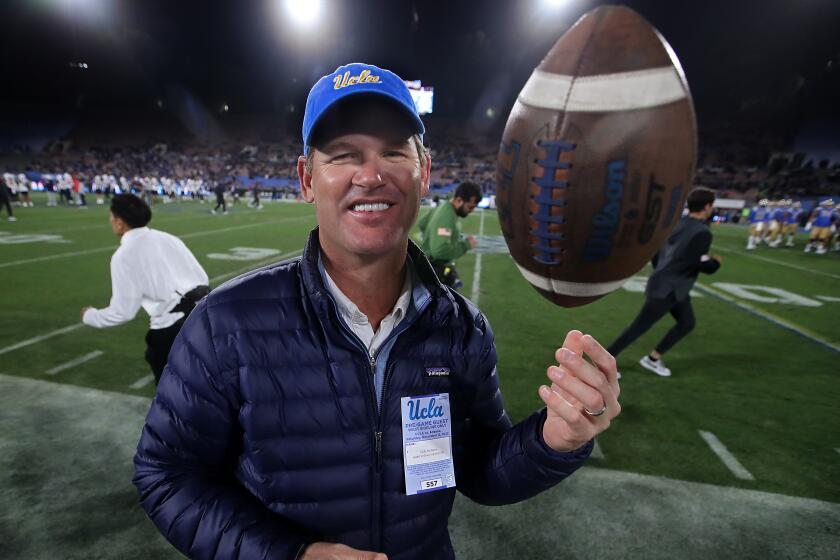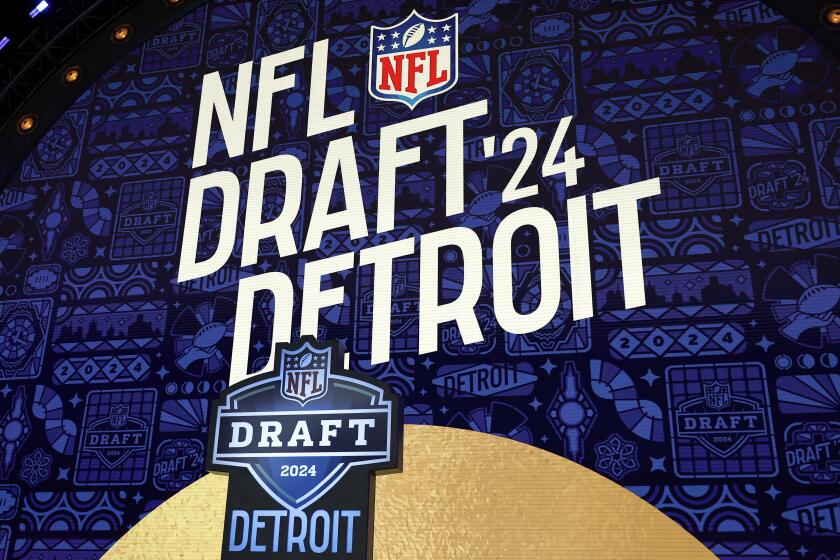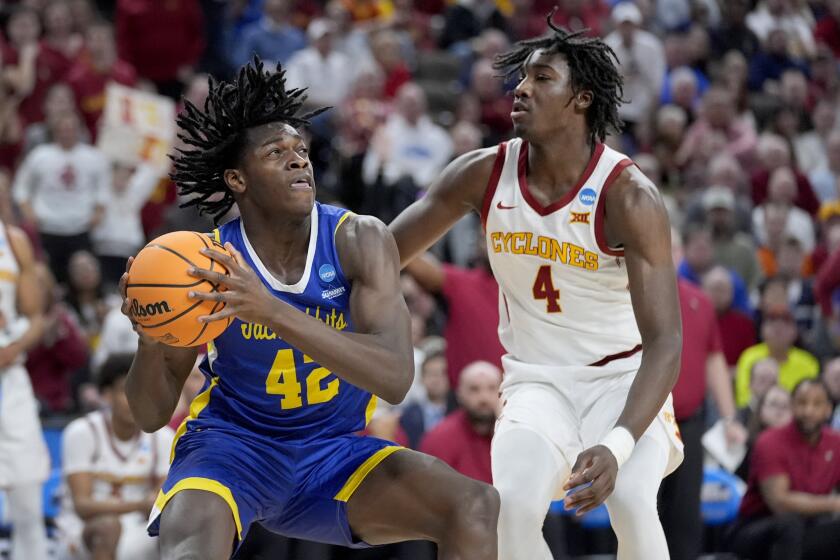MORNING BRIEFING : CROWE’S NEST : UCLA stadium plan quickly became a political football
The timing seemed right.
The UCLA football program was riding high in the fall of 1965. Behind sophomore quarterback Gary Beban, the Bruins had rallied for a miraculous comeback victory over USC.
They were headed to the Rose Bowl, where on Jan. 1, 1966, they would upset top-ranked Michigan State, finally winning in their fourth trip to the New Year’s Day showcase.
In a time of great expansion on the Westwood campus -- Pauley Pavilion had opened its doors in June 1965 -- plans were in the works to build an on-campus football stadium.
No longer would UCLA have to count itself among the tiny minority of major colleges that do not have football stadiums on campus or, in USC’s case, within walking distance.
At last, after sharing the Coliseum with USC for nearly 40 years and the NFL’s Los Angeles Rams for nearly 20, the Bruins would have a place of their own to call home.
“It would have been a great thing for UCLA,” former chancellor Charles Young says. “It would have been a great stadium.”
Westside opponents taking a “not-in-our-backyard” stance blocked it, however, and UCLA continued playing home games at the Coliseum for 17 more years.
In 1982, the Bruins moved to the Rose Bowl, putting UCLA in the unusual position of traveling a greater distance to home games (26 miles to Pasadena) than to its most important road game (14 miles to the Coliseum every other year).
Talk of an on-campus stadium has rekindled over the years, but hopes realistically were extinguished 44 years ago.
Residents of the affluent surrounding communities, mindful of the noise and traffic congestion football Saturdays would bring to the area, were dead set against a large Westwood stadium.
And more important, suggests former UCLA administrator John Sandbrook, they had two powerful, motivated allies aiding them in their anti-stadium stance: then-Gov. Edmund G. “Pat” Brown and University of California regent Dorothy Chandler.
Brown, bracing for a 1966 reelection campaign against Ronald Reagan, had no interest in alienating deep-pocketed supporters in Bel-Air, Beverly Hills, Holmby Hills and Westwood.
Chandler, mother of then-Los Angeles Times publisher Otis Chandler and wife of former Times publisher Norman Chandler, may have felt indebted to homeowners in the area whose financial backing helped her get the Music Center built downtown.
The proposal as envisioned by then-chancellor Franklin D. Murphy, Sandbrook notes, was to build a 44,000-seat stadium into the hillside where Drake Stadium now stands -- “in the same manner that Cal’s Memorial Stadium was built into a hillside at the base of Strawberry Canyon” in Berkeley. (UCLA’s biennial home game against USC would be played at the Rose Bowl.)
Plans were developed by Los Angeles architect Daniel Dworsky, a former Michigan linebacker who helped the Wolverines win national championships in 1947 and ’48.
Dworsky says his mandate was to design a stadium that would not be a “major structural imposition on views of the campus,” the playing field to be installed below grade and the west rim of the stadium not rising above the street atop the hillside.
Estimated cost: $6.5 million.
Neighbors still objected.
Chancellor Murphy, perhaps sensing defeat, proposed to the UC Board of Regents in December 1965 that the controversial stadium “not be built at this time.” His compromise: a smaller stadium that would be “capable of further expansion to a 44,000-seat stadium if and when future wisdom so dictates.”
But when the Regents rejected the compromise -- Drake Stadium, the 12,500-seat track and field facility that was eventually built on the site, would be costly and cumbersome to expand -- Young knew the idea of an on-campus football stadium was dead and probably would never be revived.
“The only time I thought we really had a chance was in ‘65,” Young says, calling the Regents’ rejection of an easily expandable alternative “foolishness of the greatest magnitude.”
In 1982, after the Raiders ditched Oakland for the Coliseum, Young moved the Bruins to the Rose Bowl.
“I had everybody in the world calling me an idiot,” Young says, noting that he briefly revisited the idea of an on-campus stadium in the late 1970s before rejecting it as unrealistic. “The coach told me it was the most stupid thing I could ever have done.
“I remember distinctly him telling me that we’d never be able to recruit any more African American players because we were leaving the inner city and we’d be viewed as deserters.”
The coach, Terry Donahue, quickly grew to love the Bruins’ new home, however, and UCLA reached the Rose Bowl game in three of its first four seasons playing in Pasadena.
Calling Young’s move “the single most important decision in UCLA football history,” Donahue says, “It gave us a chance to have our own identity. It gave us a chance to not be the third team on the tier . . . to not be a distant third in the pecking order.
“It was huge in recruiting.”
Still, while calling the Rose Bowl a “wonderful alternative,” Donahue says, “There’s no substitute for an on-campus stadium.”
In Westwood, though, those are considered unneighborly.
--
Go beyond the scoreboard
Get the latest on L.A.'s teams in the daily Sports Report newsletter.
You may occasionally receive promotional content from the Los Angeles Times.



